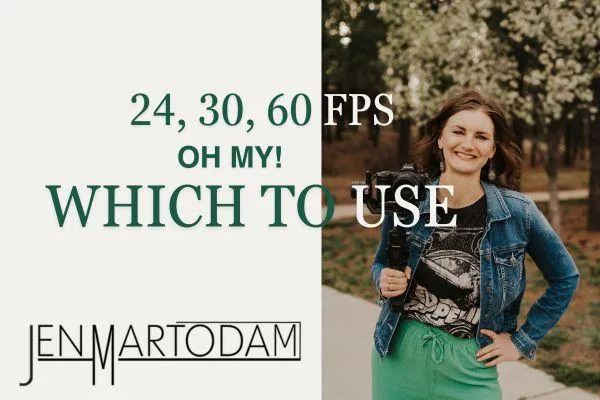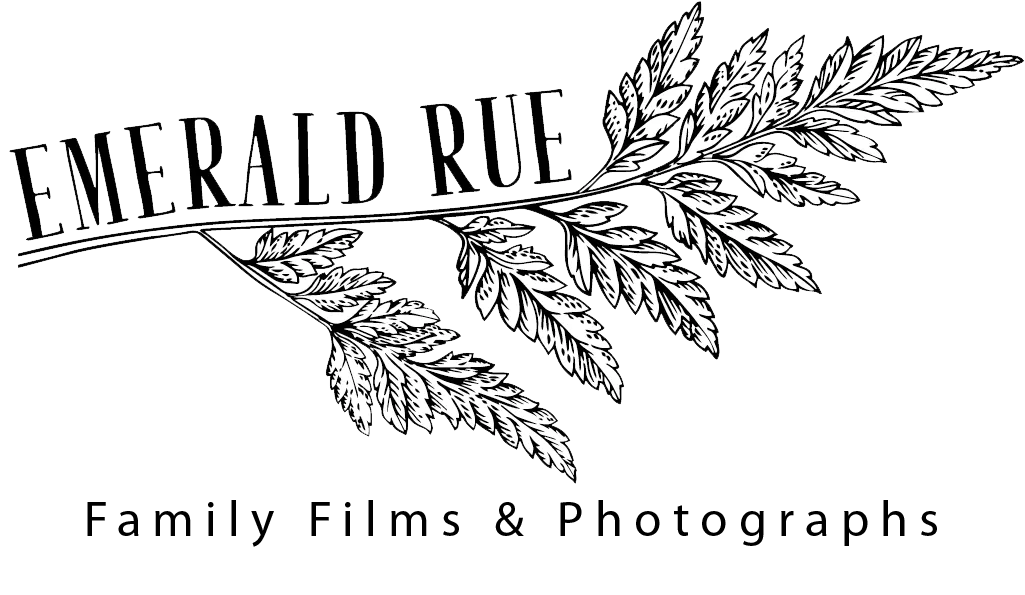BLOG

24fps vs 30fps vs 60fps in Video
24fps vs 30fps vs 60fps – Which Frame Rate Should You Use?
(For Photographers Learning Video)
In this post and video, I’ll define 24 fps vs 30 fps vs 60 fps and help you decide which frame rate you should use. Don’t make the same mistakes I made as a newbie videographer when choosing frame rate - read this post and watch this video to save your tush!
Frames per second (fps) is exactly how it sounds. The number of frames your camera records per second. For you photographers who are used to shooting in RAW and having a ton of flexibility in post, buckle up. Frames captured for video are more similar to JPGs and you know how inflexible editing a jpg can be…so it’s imperative you get all your settings correct IN camera. More on that in a later post.
Be sure to select the frame rate that correlates with the frequency of electricity of where you are located (NTSC vs PAL) to avoid banding and flicker in your footage. In Europe and countries that use PAL, the standard frame rates are 25, 30 and 50 fps. In America and countries that use NTSC, the standard frame rates are 24, 30 & 60 fps. For more on flicker reduction, see this post.
The Three Most Common Frame Rates

24 Frames per Second
24 fps (NTSC) or 25 fps (PAL): a smooth, cinematic look, real time motion
This is the frame rate I use for family, engagement, wedding, etc., when telling a story. It's also a great option for if I plan to use spoken audio in post production as part of my final video.
Most narrative movies you’ve seen shoot in 24 fps for that cinematic, outsider looking in feel.
30 Frames per Second
30 fps: a bit more “real to life” look; think TV news, reality TV, and documentaries
I use this for brand interviews & videos. When a more professional feel is necessary, I use 30 fps. It pairs well with spoken audio.
For mobile devices, 30 fps is default frame rate. Some newer phones have the ability to be changed to 24 fps or 60 fps. This function can typically be found within the settings for video mode on your device.
60 Frames per Second
60 fps (NTSC) or 50 fps (PAL) : crisp look, no motion blur; a live-action look
This frame rate refreshes close to the same rate as the eyes connect with the brain.
It's great for high-action shots such as sports or animals.
This high frame rate is best for showing off crisp movement without any motion blur.
Because of this, many high action movies you’ve seen use 60 fps when showing crisp movement in crucial.
Film in 60 fps for slow motion (you’ll slow it down to 24 or 30 fps in post-production).
How to Choose the Right Frame Rate
It’s important to understand frame rates because when filming a project, you have some creative choices to make. While editing, you’ll create a sequence or timeline to build your edit. That timeline can only be set in one frame rate. All of your clips will be interpreted as that frame rate, regardless of which it was recorded in.
Which means, you don’t want to be shooting 24, 30 and 60 fps and expect to edit it all in a 30 fps timeline. Your 24 fps footage will look choppy because you’re not feeding the timeline enough frames to fill all 30, leaving gaps and appearing choppy. Your 60 fps footage on a 30 fps timeline will essentially be throwing out every other frame to make it fit and can look disjointed.

Alternatively, you can use 60 fps footage as slow motion footage by asking your editing software to interpret it as a smaller frame rate. When this happens all 60 frames will be used but will be stretched out over 2 lengths of 30 frames, hence slowing it down.

When I film families, I exclusively shoot in 24 fps for anything I plan to use ambient or spoken audio with (so the mouth matches the words) and I shoot 60 fps for anything I plan to use as slow motion. Using 60 fps clips on my 24 fps timeline will work if I convert my footage into 24 fps.
In conclusion, when choosing a frame rate there are few things to question. Is audio essential to the project? If so, you’ll want to choose 24 or 30 fps. Are you wanting a cinematic feel (24 fps) or more true to life look (30 fps)? Do you plan to use any footage as slow motion? Then shoot in 60 fps.
Choosing Frame Rate in your Camera's Menu
Now that you understand frames per second a bit more, navigate to your camera's menu to choose your frame rate. Depending on your model, you may be able to make a shortcut to help you quickly and easily change frame rates. Refer to your camera's manual for details on navigating your menu and settings.
In your camera's frame rate menu, you might see each FPS listed with a resolution, such as 1080 or 2160. If you’re unsure what that means, you’ll want to head to this post and video and to learn more.
Now, it's time to practice! The best way to learn more about how frame rates work is to use each frame rate in a variety of ways, work with each in post-production, rinse and repeat!
Free Downloads for Beginner Videographers
Filmmaker's Preamble (Starter's Guide to Video Settings)

Camera Stabilization Checklist

EMERALD RUE, FAMILY FILMS & PHOTOGRAPHS | [email protected]
Copyright 2025 Jennifer Martodam Creative, LLC
